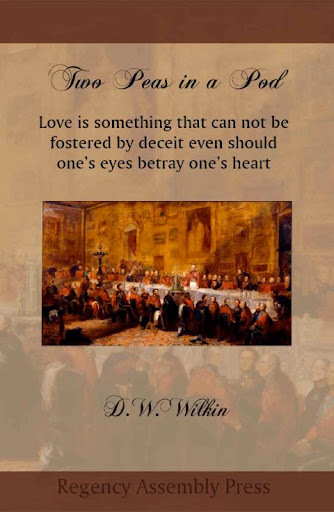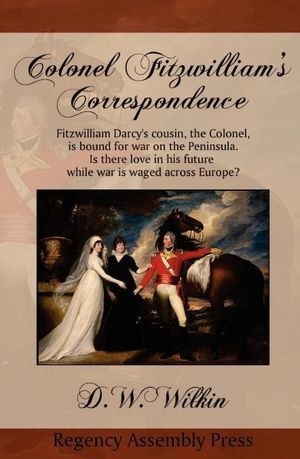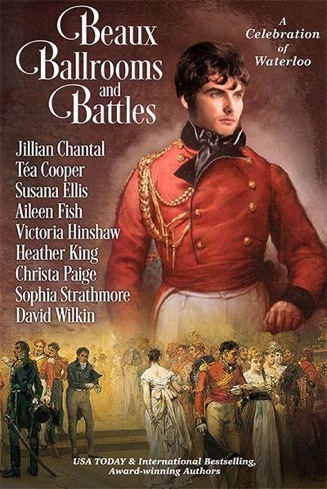D.W. Wilkin's Blog, page 39
July 21, 2016
Regency Personalities Series-Charles Landseer
Regency Personalities Series
In my attempts to provide us with the details of the Regency, today I continue with one of the many period notables.
Charles Landseer
Charles Landseer
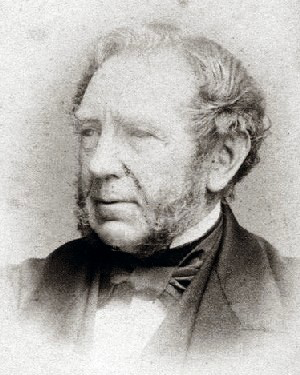
Charles Landseer
Charles Landseer was born in London on 12 August 1799, the second son of the engraver John Landseer, and the elder brother of the animal painter, Sir Edwin Landseer. He trained under his father, and the painter Benjamin Robert Haydon. He was awarded the silver palette of the Royal Society of Arts for a drawing of Laocoon in 1815, and in 1816 he entered the Royal Academy Schools where he was taught by Henry Fuseli.
In 1823 he accompanied Sir Charles Stuart de Rothesay on a diplomatic mission to Portugal and Brazil. Many of the drawings he made on the journey were shown at the British Institution in 1828.
He became an associate in of the Royal Academy in 1837, and a full academician in 1845. In 1851, he was appointed Keeper of the Royal Academy, a post requiring him to teach in the “Antique School”. He remained in the position until 1873.
Most of his pictures were of subjects from British history, or from literature. He paid close attention to the historical accuracy of the accessories and details in his paintings. His works included The Meeting of Charles I. and his Adherents before the Battle of Edgehill, Clarissa Harlowe in the Prison Room of the Sheriff’s Office (1833, now in the collection of the Tate Gallery), The Pillaging of a Jew’s House in the Reign of Richard I (1839, Tate Gallery) and The Temptation of Andrew Marvel (1841).
He died in London on 22 July 1879, leaving 10,000 guineas to the Royal Academy to fund scholarships.


Two Peas in A Pod, A Regency Romance
Two Peas in a Pod has now passed the exclusivity to Amazon test and is available in wider release, electronically (digitally) for other readers now. We sold a few copies on Amazon but nothing to warrant an exclusivity period. Amazon is too big and too full of itself.
Two Peas in a Pod is still available as a Trade paperback click here to order Regency Assembly Press.
$3.99 for an electronic copy. The Trade Paperback, due to publishing costs and the cut that Amazon takes continue to see a Trade Paperback costing $15.99 (The much hyped royalties that we writers are supposed to get is nowhere near what the news reports say. Most of that price is taken by Amazon.)
iBookstore (These are my books
and still at Amazon
Here is a picture, which of course you can click on to go fetch the book:
Love is something that can not be fostered by deceit even should one’s eyes betray one’s heart.
Two brothers that are so close in appearance that only a handful have ever been able to tell them apart. The Earl of Kent, Percival Francis Michael Coldwell is only older than his brother, Peregrine Maxim Frederick Coldwell by 17 minutes. They may have looked as each other, but that masked how they were truthfully quite opposite to one another.
For Percy, his personality was one that he was quite comfortable with and more than happy to let Perry be of a serious nature. At least until he met Veronica Hamilton, the daughter of Baron Hamilton of Leith. She was only interested in a man who was serious.
Once more, Peregrine is obliged to help his older brother by taking his place, that the Earl may woo the young lady who has captured his heart. That is, until there is one who captures Peregrine’s heart as well.
There is a visual guide to Two Peas in a Pod 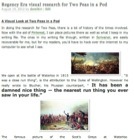 as well at Pinterest and a blog post here.
as well at Pinterest and a blog post here.


July 20, 2016
Regency Personalities Series-Paul Storr
Regency Personalities Series
In my attempts to provide us with the details of the Regency, today I continue with one of the many period notables.
Paul Storr
28 October 1770 – 18 March 1844
Paul Storr was England’s most celebrated silversmith during the first half of the nineteenth century and his legacy lives on today. His pieces historically and currently adorn royal palaces and the finest stately homes throughout Europe and the world. Storr’s reputation rests on his mastery of the grandiose neo-Classical style developed in the Regency period. He quickly became the most prominent silversmith of the nineteenth century, producing much of the silver purchased by King George III and King George IV. Storr entered his first mark in the first part of 1792, which reflects his short-lived partnership with William Frisbee. Soon after, he began to use his PS mark, which he maintained throughout his career with only minor changes. His first major work was a gold font commissioned by the Duke of Portland in 1797 and in 1799 he created the “Battle of the Nile Cup” for presentation to Lord Nelson.
Much of Storr’s success was due to the influence of Philip Rundell, of the popular silver retailing firm, Rundell, Bridge and Rundell. Rundell’s firm nearly monopolized the early nineteenth-century market for superior silver and obtained the Royal Warrant in 1806. This shrewd businessman realised the talent of Paul Storr and began pursuing him in 1803, however it was not until 1807 that Storr finally joined the firm. After many years of working for Rundell, Storr realised he had lost much of his artistic freedom and by 1819 he left the firm to open his own shop, turning his attentions towards more naturalistic designs and soon began enjoying the patronage he desired. After only a few years of independence, Storr realised he needed a centralised retail location and partnered with John Mortimer, founding Storr and Mortimer in 1822 on New Bond Street.
Son of Thomas Storr of Westminster, first silver-chaser later innkeeper. Apprenticed c. 1785. Before his first partnership with William Frisbee in 1792 he worked in Church Street, Soho, which was the address of Andrew Fogelberg at which Storr’s first separate mark is also entered.
First mark entered as plateworker, in partnership with William Frisbee, 2 May 1792. Address: 5 Cock Lane, Snow Hill.
Second mark alone, 12 January 1793. Address: 30 Church Street, Soho.
Third mark, 27 April 1793.
Fourth 8 August 1794. Moved to 20 Air Street, 8 October 1796, (where Thomas Pitts had worked till 1793).
Fifth mark, 29 November 1799.
Sixth, 21 August 1807. Address 53 Dean Street, Soho.
Seventh, 10 February 1808.
Eighth ?
Ninth, 21 October 1813.
Tenth, 12 September 1817. Moved to Harrison Street, Gray’s Inn Road, 4 March 1819, after severing his connection with Rundell, Bridge and Rundell.
Eleventh mark, 2 September 1883. Address: 17 Harrison Street.
Twelfth and last mark, 2 September 1833.
Heal records him in partnership with Frisbee and alone at Cock Lane in 1792, and at the other addresses and dates above, except Harrison Street.
Storr married in 1801, Elizabeth Susanna Beyer of the Saxon family of piano and organ builders of Compton Street, by whom he had ten children. He retired in 1838, to live in Hill House in Tooting. He died 18 March 1844 and is buried in the churchyard of St Nicholas, Tooting. His will, proved 3 April 1844, shows an estate of £3,000.
There is a memorial to him at the church of St Mary, Otley, Suffolk put up in 1845 by his son the Rev. Francis Storr, the incumbent.
An example of his work is the cup made for presentation to the British admiral Lord Nelson to mark his victory at the Battle of the Nile.
Items from Storr’s workshops may be seen at Windsor Castle and during the summer opening season at Buckingham Palace. There are significant holdings of items in the National Silver Collection at the Victoria and Albert Museum as well as in the Wellington Collection at Apsley House. Outside London there are important works at Brighton Pavilion, at the Bowes Museum, Barnard Castle and at Woburn Abbey. In the United States there are holdings of Paul Storr at the Museum of Fine Arts, Boston, and the Metropolitan Museum, New York, among others. The Birmingham Museum of Art in Alabama has two significant pieces, one of which is illustrated here. In Canada, there are significant pieces in the Museum of Fine Arts, Montreal and the Winnipeg Art Gallery, Winnipeg, Manitoba. Australia has holdings at the National Gallery of Victoria in Melbourne. In Portugal there is a fascinating group of silver made by Storr at the Casa Museu Medeiros e Almeida, Lisbon, whereas in Russia, at the State Hermitage Museum, there is silver supplied to Tsar Nicholas I and members of the aristocracy by Hunt & Roskell, successors to Storr & Mortimer.


A Trolling we Will Go Omnibus: The first three Fantasy stories of Humphrey and Gwendolyn
A Trolling We Will Go Omnibus:The Early Years
Not only do I write Regency and Romance, but I also have delved into Fantasy.
The Trolling series, (the first three are in print) is the story of a man, Humphrey. We meet him as he has left youth and become a man with a man’s responsibilities.
We follow him in a series of stories that encompass the stages of life. We see him when he starts his family, when he has older sons and the father son dynamic is tested.
We see him when his children begin to marry and have children, and at the end of his life when those he has loved, and those who were his friends proceed him over the threshold into death.
All this while he serves a kingdom troubled by monsters. Troubles that he and his friends will learn to deal with and rectify.
Here are the first three books together as one longer novel.
A Trolling We Will Go, Trolling Down to Old Mah Wee and Trolling’s Pass and Present.
Available in a variety of formats.
For $6.99 you can get this fantasy adventure.
Barnes and Noble for your Nook
The stories of Humphrey and Gwendolyn. Published separately in: A Trolling we Will Go, Trolling Down to Old Mah Wee and Trollings Pass and Present.
These are the tales of how a simple Woodcutter and an overly educated girl help save the kingdom without a king from an ancient evil. Long forgotten is the way to fight the Trolls.
Beasts that breed faster than rabbits it seems, and when they decide to migrate to the lands of humans, their seeming invulnerability spell doom for all in the kingdom of Torahn. Not only Torahn but all the human kingdoms that border the great mountains that divide the continent.
Feedback
If you have any commentary, thoughts, ideas about the book (especially if you buy it, read it and like it
July 19, 2016
Regency Personalities Series-Sir Henry Raeburn
Regency Personalities Series
In my attempts to provide us with the details of the Regency, today I continue with one of the many period notables.
Sir Henry Raeburn
4 March 1756 – 8 July 1823
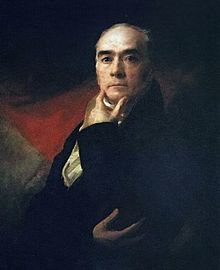
Sir Henry Raeburn
Sir Henry Raeburn was born the son of a manufacturer in Stockbridge, on the Water of Leith; a former village now within the city of Edinburgh. His ancestors were believed to have been soldiers, and may have taken the name ‘Raeburn’ from a hill farm in Annandale, held by Sir Walter Scott’s family. Orphaned, he was supported by his older brother and placed in Heriot’s Hospital, where he received an education. At the age of fifteen he was apprenticed to the goldsmith James Gilliland of Edinburgh, and various pieces of jewellery, mourning rings and the like, adorned with minute drawings on ivory by his hand, still exist. Soon he took to the production of carefully finished portrait miniatures; meeting with success and patronage, he extended his practice to oil painting, at which he was self-taught. Gilliland watched the progress of his pupil with interest, and introduced him to David Martin, who had been the favourite assistant of Allan Ramsay the Latter, and was now the leading portrait painter in Edinburgh. Raeburn was especially aided by the loan of portraits to copy. Soon he had gained sufficient skill to make him decide to devote himself exclusively to painting. George Chalmers (1776; Dunfermline Town Hall) is his earliest known portrait.
In his early twenties, Raeburn was asked to paint the portrait of a young lady he had noticed when he was sketching from nature in the fields. Anne was the daughter of Peter Edgar of Bridgelands, and widow of Count James Leslie of Deanhaugh. Fascinated by the handsome and intellectual young artist, she became his wife within a month, bringing him an ample fortune. The acquisition of wealth did not affect his enthusiasm or his industry, but spurred him on to acquire a thorough knowledge of his craft. It was usual for artists to visit Italy, and Raeburn set off with his wife. In London he was kindly received by Sir Joshua Reynolds, the president of the Royal Academy, who advised him on what to study in Rome, especially recommending the works of Michelangelo, and gave Raeburn letters of introduction for Italy. In Rome he met his fellow Scot Gavin Hamilton, Pompeo Girolamo Batoni and Byers, an antique dealer whose advice proved particularly useful, especially the recommendation that “he should never copy an object from memory, but, from the principal figure to the minutest accessory, have it placed before him.” After two years of study in Italy he returned to Edinburgh in 1787, and began a successful career as a portrait painter. In that year he executed a seated portrait of the second Lord President Dundas.
Examples of his earlier portraiture include a bust of Mrs Johnstone of Baldovie and a three-quarter-length of Dr James Hutton, works which, if somewhat timid and tentative in handling and not as confident as his later work, nevertheless have delicacy and character. The portraits of John Clerk, Lord Eldin, and of Principal Hill of St Andrews belong to a later period. Raeburn was fortunate in the time in which he practised portraiture. Sir Walter Scott, Hugh Blair, Henry Mackenzie, Lord Woodhouselee, William Robertson, John Home, Robert Fergusson, and Dugald Stewart were resident in Edinburgh, and were all painted by Raeburn. Mature works include his own portrait and that of the Rev. Sir Henry Moncrieff Wellwood, the bust of Dr Wardrop of Torbane Hill, the two full-lengths of Adam Rolland of Gask, the remarkable paintings of Lord Newton and Dr Alexander Adam in the National Gallery of Scotland, and that of William Macdonald of St Martin’s.
Apart from himself, Raeburn painted only two artists, one of whom was Sir Francis Leggatt Chantrey, the most important and famous British sculptor of the first half of the nineteenth century. It has recently been revealed that Raeburn and Chantrey were close friends and that Raeburn took exceptional care over the execution of his portrait of the sculptor, one of the painter’s mature bust-length masterpieces.
It was commonly believed that Raeburn was less successful in painting female portraits, but the exquisite full-length of his wife, the smaller likeness of Mrs R. Scott Moncrieff in the National Gallery of Scotland, and that of Mrs Robert Bell, and others, argue against this. Raeburn spent his life in Edinburgh, rarely visiting London, and then only for brief periods, thus preserving his individuality. Although he, personally, may have lost advantages resulting from closer association with the leaders of English art, and from contact with a wider public, Scottish art gained much from his disinclination to leave his native land. He became the acknowledged chief of the school which was growing up in Scotland during the earlier years of the 19th century, and his example and influence at a critical period were of major importance. So varied were his other interests that sitters used to say of him, “You would never take him for a painter till he seizes the brush and palette.”
In 1812 he was elected president of the Society of Artists in Edinburgh, in 1814 associate, and in the following year full member of the Royal Scottish Academy. On 29 August 1822 he was knighted by George IVand appointed His Majesty’s limner for Scotland at the Earl of Hopetoun house. He died in Edinburgh.
Raeburn had all the essential qualities of a popular and successful portrait painter. He was able to produce a telling and forcible likeness; his work is distinguished by powerful characterisation, stark realism, dramatic and unusual lighting effects, and swift and broad handling of the most resolute sort. David Wilkie recorded that, while travelling in Spain and studying the works of Diego Velázquez, the brushwork reminded him constantly of the “square touch” of Raeburn. Scottish physician and writer John Brown wrote that Raeburn “never fails in giving a likeness at once vivid, unmistakable and pleasing. He paints the truth, and he paints it with love”.
Raeburn has been described as a “famously intuitive” portrait painter. He was unusual amongst many of his contemporaries, such as Reynolds, in the extent of his philosophy of painting directly from life; he made no preliminary sketches. This attitude partly explains the often coarse modelling and clashing colour combinations he employed, in contrast to the more refined style of Thomas Gainsborough and Reynolds. However these qualities and those mentioned above anticipate many of the later developments in painting of the nineteenth century from romanticism to Impressionism.
Sir Henry Raeburn died in St Bernard’s House (17 St Bernards Crescent), Stockbridge, Edinburgh. He is buried in St. Cuthbert’s churchyard against the east wall (the monument erected by Raeburn in advance) but also has a secondary memorial in the Church of St John the Evangelist, Edinburgh.
Raeburn made more than a thousand paintings spanning fifty years.


A Jane Austen Sequel: Colonel Fitzwilliam’s Correspondence
Colonel Fitzwilliam’s Correspondence For your enjoyment, one of the Regency Romances I published.
It is available for sale and I hope that you will take the opportunity to order your copy.
For yourself or as a gift. It is now available in a variety of formats.
For just a few dollars this Regency Romance can be yours for your eReaders or physically in Trade Paperback.
Visit the dedicated Website
Barnes and Noble for your Nook or in Paperback
Amazon for your Kindle or in Trade Paperback
Witnessing his cousin marry for love and not money, as he felt destined to do, Colonel Fitzwilliam refused to himself to be jealous. He did not expect his acquaintance with the Bennet Clan to change that.
Catherine Bennet, often called Kitty, had not given a great deal of thought to how her life might change with her sisters Elizabeth and Jane becoming wed to rich and connected men. Certainly meeting Darcy’s handsome cousin, a Colonel, did not affect her.
But one had to admit that the connections of the Bingleys and Darcys were quite advantageous. All sorts of men desired introductions now that she had such wealthy new brothers.
Kitty knew that Lydia may have thought herself fortunate when she had married Wickham, the first Bennet daughter to wed. Kitty, though, knew that true fortune had come to her. She just wasn’t sure how best to apply herself.
Feedback
If you have any commentary, thoughts, ideas about the book (especially if you buy it, read it and like it
July 18, 2016
Regency Personalities Series-Mary Ridgeway Stockdale
Regency Personalities Series
In my attempts to provide us with the details of the Regency, today I continue with one of the many period notables.
Mary Ridgeway Stockdale
1769-1821
Mary Ridgeway Stockdale was an English writer on the themes of Christian spirituality. She was the daughter of John Stockdale and sister of John Joseph Stockdale.
Mary was born in London and was a sickly child, educated at the home of her father, a publisher. As she grew older, her health recovered and she pursued her own education, reading widely and enthusiastically. She soon devoted herself to nursing her mother and family and a young maid servant Elizabeth Haws. When Elizabeth died, Mary wrote her first poem, The Effusions of the Heart which her father offered to publish. However, Mary modestly refused and only allowed publication when she herself again fell ill and believed herself near to death. In The Mirror of the Mind, she wrote of “the emptiness of sublunary things” and that she held “the most perfect indifference for everything around me.”
She wrote:
The Effusions of the Heart: Poems (1798);
The Mirror of the Mind: Poems (with an autobiography) (1810), 2 vols;
The Life of a Boy (1821), 2 vols.;
— besides translations from Arnaud Berquin and others, and some minor pieces.


Beaux, Ballrooms, and Battles
A new Regency Anthology
Beaux, Ballrooms, and Battles anthology, celebrating the 200th anniversary of the victory at Waterloo in story.
Looks good, huh? The talented writer and digital artist, Aileen Fish created this.
It will be available digitally for $.99 and then after a short period of time sell for the regular price of $4.99
The Trade Paperback version will sell for $12.99
Click on the Amazon Link—>Amazon US

My story in the anthology is entitled: Not a Close Run Thing at All, which of course is a play on the famous misquote attributed to Arthur Wellesley, “a damn close-run thing” which really was “It has been a damned nice thing — the nearest run thing you ever saw in your life.”
Samantha, Lady Worcester had thought love was over for her, much like the war should have been. The Bastille had fallen shortly after she had been born. Her entire life the French and their Revolution had affected her and all whom she knew. Even to having determined who she married, though her husband now had been dead and buried these eight years.
Yet now Robert Barnes, a major-general in command of one of Wellington’s brigades, had appeared before her, years since he had been forgotten and dismissed. The man she had once loved, but because he had only been a captain with no fortune, her father had shown him the door.
With a battle at hand, she could not let down the defenses that surrounded her heart. Could she?
As her father’s hostess, she had travelled with him to Brussels where he served with the British delegation. Duty had taken her that night to the Duchess of Richmond’s ball. The last man she ever expected to see was Robert, who as a young captain of few prospects, had offered for her, only to be turned out by her father so that she could make an alliance with a much older, and better positioned (wealthy), aristocrat.Now, their forces were sure to engage Napoleon and the resurgent Grande Armée. Meeting Robert again just before he was to be pulled into such a horrific maelstrom surely was Fate’s cruelest trick ever. A fate her heart could not possibly withstand.
Here are the first few paragraphs to entice you:
Chapter One
“Come father, we shall be dreadfully late. Already the other guests of the inn have all departed for the ball.” Samantha distinctly heard him grunt. Her father did not like balls.
“You will not fault me if I stay to the card room with the other old gentlemen. We always have much to discuss,” he said. Her father served with the delegation led by Sir Charles Stuart.
In a moment he would complain about the pains caused by his gout. Always handy when social obligations were required and never present when he had his ‘important’ work to do.
“Father, are you sure that there is going to be a battle? I just can’t believe that Her Grace of Richmond is hosting a ball when the soldiers will be going off to fight.” Lady Worcester, who had been once just The Honourable Samantha Villiers, asked of her father, the second Viscount Haddington.
She had married the Earl of Worcester twelve years before, a man who had died before the Peace of Amiens had been shattered. They had no children, and as there were only distant heirs, the property went to those relations whilst the title became extinct. Samantha was the last Lady Worcester.
“The fighting is close at hand, but I have every confidence in the Duke of Wellington. Marvellous man. The French will be quite surprised when he takes this army and invades their lands,” her father said. “I am afraid I shall not be able to stand up and offer one dance with you, my good girl. The pains in my foot are troubling me.”
As Samantha had predicted.
That was always the excuse. Samantha was assured that her father had not once stood up to dance since her mother had died.
Over the many years she had had to study her father, for she had taken to being the hostess of his household upon the death of her husband, her mother having died before her own marriage, she had noted that her father was more impressed by title, position, and wealth, than by capabilities.
However, her own study of Wellesley, now the Duke, paralleled her father’s assessment at least when it came to Wellington’s successes as a commander. Yet the Duke had never faced Napoleon. Until only the most recent years, the Emperor of France had seldom lost any engagement. The Duke of Wellington had faced Napoleon’s lieutenants, and captains, but never the very best commanders of Le Grande Armée.
“It is understandable, Father, with your foot being troublesome, that you wish to proceed to the card room. You should enjoy this night. It will all be over too soon, and as you say, the engagement is imminent. Many here this evening we may never know again.” More than twenty years of war and she had known the loss of several military men.
Her father nodded. He had trained her to recognize the truth regarding these years of war. It was why he had been so against a liaison with Robert Barnes when she had first come out. Her other ardent suitor during her Season in ’03.
A time long ago.
Samantha and the Viscount were in the foyer of their lodgings. All the best places had been taken by those of great rank and wealth. This was a small inn that six other families shared.
She and her father were ready to leave for the ball, their hired carriage at the front of the building even then. Samantha had looked from the window and seen their coachman, Phillipe, waiting patiently.
He was paid for from her Worcester monies. The two years that Samantha had not lived with her father whilst married, had resulted in his losing near all the Haddington monies. He had retained very little of the capital, none of grandfather’s lands, and survived on monies advanced by the government to see to his office as well as what monies Lady Worcester was able to provide to the expenses of his household. Expenses that she managed with prudence.
Shaking her head and exiling the thought away, she pondered on a ball in a coach house. How novel to attend.
She had called on the Duchess several times, as they knew each other socially. Samantha well knew many of the women that had formed society here in Brussels. Her father’s stature with the delegation caused her to be a hostess to much smaller events than the ball.
With the assured defeat of Napoleon the war would end and her father’s service would be over. So also would the service of that other man who had asked for her before.
Robert had gone back to fight once war broke out again when the Peace of Amiens fell apart. She had since lost track of him.
Samantha had forced herself to lose track of him.


July 17, 2016
Regency Personalities Series-Lieutenant General Sir Thomas Maitland
Regency Personalities Series
In my attempts to provide us with the details of the Regency, today I continue with one of the many period notables.
Lieutenant General Sir Thomas Maitland
10 March 1760 – 17 January 1824
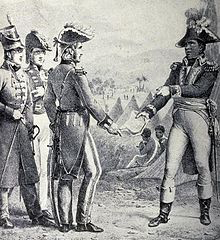
Thomas Maitland
Lieutenant General Sir Thomas Maitland was commissioned into the Edinburgh Light Horse, shortly after his birth, but did not take up his commission until he joined the 78th Foot as a Captain in 1778. He transferred to the 72nd Foot, and then to the 62nd Foot as a Major in 1790. He was promoted Lieutenant-Colonel in 1794 and Colonel and Brigadier-General in 1798.
While serving at St. Domingue, he proactively dealt with Toussaint to disengage Britain. Elkins and McKitrick write:
It was in fact Maitland and not the War Ministry who had determined that Britain’s only sensible choice, rather than try to maintain any kind of presence at Jérémie and Môle-Saint-Nicolas, was to deal directly with Toussaint and negotiate a total evacuation of the island. Accordingly he and the black general concluded a secret agreement on August 31, 1798. Great Britain would desist from any further attack on St. Domingue and any interference with its internal affairs; Toussaint made a similar promise with regard to Jamaica; and Maitland would see that provisions were allowed to reach the ports of St. Domingue without interference from British cruisers.
Maitland served as Governor of Ceylon (Sri Lanka) during 1805 to 1811.
In early 1812, Arthur Wellesley, Earl of Wellington began the campaign that resulted in his victory at the Battle of Salamanca on 22 July. To prevent Marshal Louis Gabriel Suchet from sending French reinforcements from the east coast of Spain, Wellington requested that Lord William Bentinck launch a diversionary operation using the British garrison of Sicily. At first Bentinck agreed to send 10,000 of his soldiers, but in March he reversed himself. After much persuasion, he allowed the operation to go forward and on 7 June he put 8,000 men aboard naval transports under the command of Maitland. The fickle Bentinck changed his mind again on 9 June, stopping the expedition. At last on 28 June Maitland sailed for Minorca. The fleet first picked up 6,000 Spanish troops at Minorca and landed on 31 July at Palamós, 65 miles (105 km) northeast of Barcelona. He wisely decided that Barcelona was too strong to attack, but he also refused to try to capture weakly held Tarragona. Maitland soon received news that Joseph O’Donnell’s Army of Murcia had been routed at the Battle of Castalla on 21 July. Without the support of O’Donnell, Maitland decided he could not accomplish anything. He re-embarked his expeditionary force and sailed to Alicante instead, joining his troops with the garrison to form an army of 15,000 men. Because of the disaster at Salamanca, the French were forced to evacuate both Madrid in central Spain and Andalusia in the south. Their combined forces joined Suchet in the province of Valencia. In close proximity to 80,000 French soldiers, Maitland declined to move from Alicante. Maitland asked to be relieved in September 1812 due to illness.
While at Ceylon, Maitland was attracted to a place at “Galkissa” (Mount Lavinia) and decided to construct his palace there.
During this time, Maitland fell in love with a half-caste dancing-girl named Lovina, who had been born to Portuguese and Sinhalese parents. During the construction of the palace, Maitland gave instructions for the construction of a secret tunnel to Lovina’s house, which was located close to the governor’s palace. One end of the tunnel was inside the well of Lovina’s house and the other end was in a wine cellar inside the governor’s palace. When the governor came to reside there, he would often use the tunnel to meet Lovina.
The Sinhalese village that surrounded the Governor’s mansion developed into a modern city named “Galkissa”. Later the city was renamed “Mount Lavinia” in honour of Lovina. In 1920 the tunnel was sealed up.
The bicentenary celebration of the Mount Lavinia Hotel was held in 2005. Some of Sir Thomas Maitland’s relatives living in the UK attended the ceremony.
Maitland became Lieutenant-Governor of Portsmouth and General Officer Commanding South-West District in May 1813 and was then appointed as Governor of Malta on 23 July 1813, when the island became a crown colony instead of a protectorate. The plague had broken out in Malta in March 1813 and the disease began to spread especially in Valletta and the Grand Harbour area. When Maitland arrived, he enforced stricter quarantine measures. The plague spread to Gozo by the following January, but the islands were free of the disease by March 1814. Overall, 4486 people were killed which amounted to 4% of the total population. It is thought that the outbreak would have been worse without Maitland’s strict actions.
After the eradication of the plague, Maitland made several reforms. He removed British troops from Lampedusa on 25 September 1814, ending the dispute that had started in 1800. On Malta, he was autocratic and he refused to form an advisory council made up of Maltese representatives, and so he was informally known as “King Tom”. He formed the Malta Police Force in 1814, while the local Italian-speaking Università was dissolved in 1819. Various reforms were undertaken in taxation and the law courts as well. Maitland remained Governor until his death on 17 January 1824.
While he was Governor of Malta, Maitland also served as Lord High Commissioner of the Ionian islands during 1815 to 1823, while the islands were a British protectorate. The seat of administration was at Corfu.


RAP (Regency Assembly Press) in need of Beta-Readers
Regency Assembly
Press
is looking for
Beta Readers
One novel is ready for Beta Reading
We have a continuation of Pride and Prejudice with Ms Caroline Bingley and her fortune at stake:
Do we think that Mr Hurst married his Bingley Bride without incentive? It is highly probable that Caroline Bingley, even though she has a sharp, acerbic tongue, still is in possession of a fortune and an astute fortune hunter who deciphers this may soon be on the road to, if not a happy marriage, one with financial security.
Please respond or send an email if you are interested



